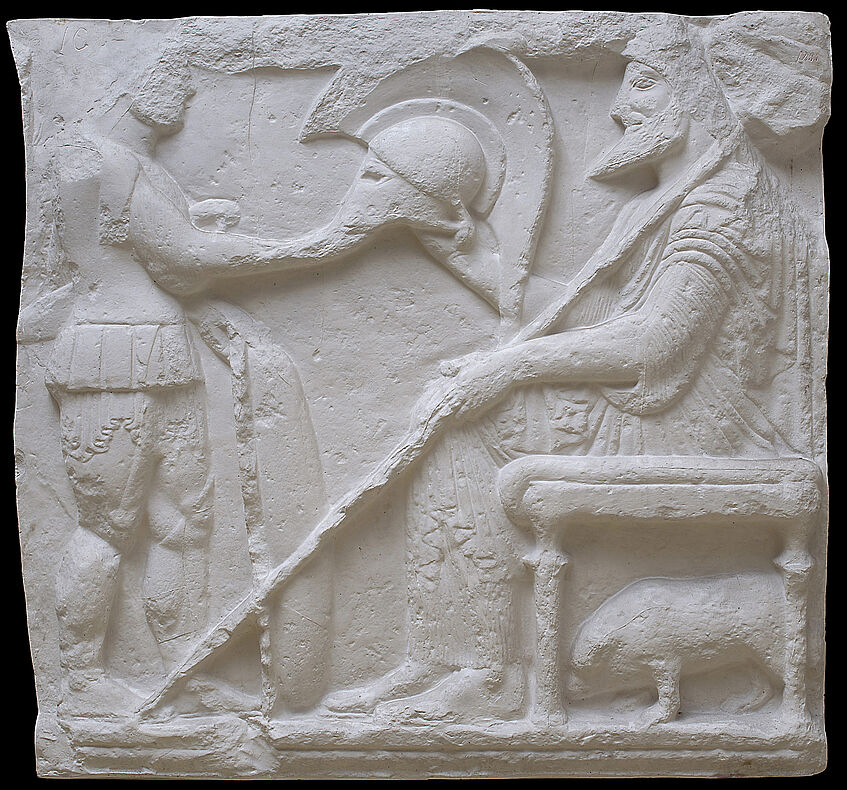Tour A: Hats, Helmets, and Hairstyles
The head is one of the most distinctive parts of the body, and therefore it is no surprise that headgear in various forms – hats, helmets, and hairstyles – were important ways of signalling status and identity in the ancient world.
A6 The Corinthian Helmet

[IKA, Photo: Kristina Klein]
Inv.-Nr. 83m
Teil des Nordfrieses vom sog. Harpyienmonument in Xanthos
London, British Museum 1848,1020.1
480/470 v. Chr.
This relief comes from a tomb found in Lykia (modern Turkey), known as the Harpy Tomb. The tomb itself took the form of a tall rectangular tower, with scenes in relief sculpture on all four sides. On this north side, a standing young man in amour hands a helmet to an older, bearded man who is seated on a throne.
The type of helmet represented is perhaps the best known type from the Greek world, the Corinthian helmet, with its characteristic cheek and nose coverings to protect the fact (compare this with the Pilos Helmet). Sometimes these Corinthian helmets had plumes running along the crest of the head down to the back of the next, as in this example. The helmets themselves were made of bronze, while the plumes were made from horse hair.
The interpretation of this scene is not clear. Some scholars have suggested that the enthroned man is Kybernis, a dynast who ruled Lykia around this time. Other have suggested that he is Hades, the god of the Underworld, sitting in judgement on the souls of the dead. The interpretation of the two ‘harpies’ is also debated. These winged female figures on the north and south sides may not in fact be harpies, but could also represent sirens or furies.
